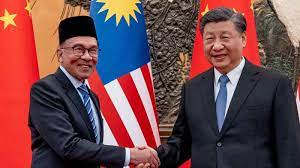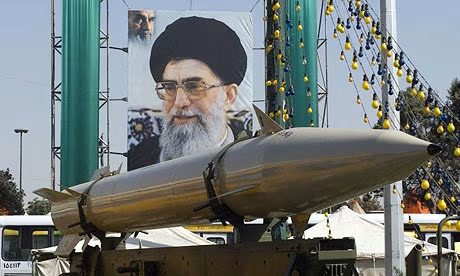
By Collins Chong Yew Keat
KUALA LUMPUR, Malaysia: Malaysia will need to have a strategic long term reorientation of its economic fundamentals, especially on ensuring a dependable and sustainable external economic dependence.
Current ingrained argument that the next century of growth will be in Asia, and that the Asian Century will be led by the Chinese Economic Century and thus the inevitability of the country’s main economic entanglement with the next economic giant, remains a flawed and risky calculation.
This notion that the West and the US have lost their economic lustre, and left with just the capacity as the security provider, has reverberated far and wide, and has been accepted as the primary driver in shaping the region and the nation’s future policy considerations.
This notion that the West and the US have lost their economic lustre, and left with just the capacity as the security provider, has reverberated far and wide, and has been accepted as the primary driver in shaping the region and the nation’s future policy considerations.
As the rest of the world has realised the future risks of a slowing and a declining Chinese economy, and cognisant of the resilience of the conventional economic powers of the West and new rising powers including India, the region however, is still trapped by the perpetual economic dogma that limits options and responses in facing renewed security threats.
De-risking moves have been prevalent, in efforts to jettison the entanglement with the primary source of economic reliance that have oftentimes impeded the rooms to maneuver in facing renewed hard power expansion of Beijing. Germany has led this drive in Europe, reiterated by Foreign Minister Annalena Baerbock, with growing moves by the UK and the US in speeding up the de-risking initiatives.
For Malaysia, the recent waves of deeper economic and investment overtures to Beijing reflect the inability to see beyond China as the main economic lifeline, both as a source of investment inflow and export destination. From the greater commitments made at the China-Asean Expo (CAEXPO) 2023 in Nanning, to the various initiatives made to stimulate stalling massive Chinese investments and projects in the country.
Country Garden’s Crisis and Malaysia’s Trap
Country Garden’s debt crisis, on top of the similar woes facing Evergrande, all portray the start of the reversal of China’s growth bubble and momentum.
Beijing now faces the most serious economic slowdown and decline after decades of easy credit, reliance on external market and IP theft, currency manipulation and distortion of market prices, and capitalising on its central economic diktats in controlling state owned enterprises and providing easy access to cheap credit and government controlled priority areas for growth.
China's property sector accounts for more than half of global new home sales and home building, and it is the largest asset class in the world, with an estimated market value of around US$62 trillion.
This crisis would trigger a ripple and spillover implications on the level of trust and confidence on future resilience and sustainability of this Chinese model of economic expansion and its global economic sway including its BRI ventures and its RCEP leadership.
China's property sector accounts for more than half of global new home sales and home building, and it is the largest asset class in the world, with an estimated market value of around US$62 trillion.
This crisis would trigger a ripple and spillover implications on the level of trust and confidence on future resilience and sustainability of this Chinese model of economic expansion and its global economic sway including its BRI ventures and its RCEP leadership.
China is leading efforts to dethrone the Western led order and to halt the US led West’s efforts to regain regional influence and to bolster regional pushback.
This property crisis is a series of indicators in a larger internal structural and systemic economic fault that has seen the exodus of top technological firms and companies, the worsening demographic crisis of an ageing population and a shrinking workforce, the unemployment crisis that has hit the younger demographic groups hard, and the inability to create a sustaining internal capacity on its technological and scientific drive without the lifeline of Western support. The dual circulation strategy has also not yielded immediate results as intended.
China’s decades of state led economic boom with market opening and reforms without enough rooms for flexible and adjustable long term political opening have created the imbalance of the needed co-creator and complementing factor of structural and systemic balancing tools in creating a sustaining and dependable economic and trade model and system that encompasses beyond national barriers.
The liberal economic model of the West needs simultaneous and equal commitment of systemic political environment and support that will enable this long term market led capitalist system, even in a Friedman model.
The West’s political freedom guarantee and adherence to rules and openness enable the thriving of business and economic expansion based on assurances and normative guarantees which form the stability and protection of new progressive economic creation capacities that safeguard the investment climate, asset protection, intellectual property rights and a rules-based trade and business architecture.
Beijing fears that once Malaysia has enough capacity to lessen its economic dependence and its market and credit dependence, Malaysia will have greater openings and options to justify its security discourse and options. Beijing is cognisant of Malaysia's dire need to shore up its economic fortunes and to secure greater internal support in which ensuring economic pie enlargement is the central factor.
It also provides new second front capacity and advantage for Beijing as a fall back option in facing its economic decline, as top firms exit the Chinese market and countries that are being the next target are often the potential nemesis of Beijing including Vietnam, India, Singapore and Indonesia.
Time for Wise New Reality Check
The entrenched notion that as a small nation of 33 million people, the inevitability of relying on China or Asean as the central economic lifelines is an obsolete argument and further entraps us with conventional old mechanisms and structures of economic orientation.
We are facing a critical crossroads where a strategic and holistic shift and transformation in our economic model, based on high impact and high income and assured long term assurance in a knowledge based and high technology economy, is needed.
The US and India have the most favourable demographic and future economic advantage in the long game. New Delhi is already in Malaysia’s top ten trading partners and is projected to be the world’s third biggest economic power by 2028.
Both India and the US still have their best years and decades ahead in terms of economic sustainability parameters of a booming and young demographic advantage, and progressive and sustainable scientific and high technology capacity in driving consistent economic tiers and maturity in outcome and returns.
In 2022, the US, Singapore, and Japan contributed to the highest net inflows of foreign direct investments to Malaysia, each amounting to approximately 37.8 billion, 11.3 billion and 9.6 billion Malaysian ringgit respectively. All three represent the pillars of a values-based economic model which is based on trust and track record of consistency and spillover communal impact from the investments.
It is critical to portray a new shift in the country’s business, trade and economic climate that is underscored by the commitment to adhere to these new values, away from the conventional dogma of low value economic multiplier chain and in creating new frontiers of trusted high impact, durable and tangible economic spillover impact on the people. This will correct the state development gap, address demographic barriers, propel social mobility and resolve hardcore poverty with subsequent solutions in breaking the middle income trap.
Capitalising on Malaysia’s future economic potential by leveraging on our geostrategic advantage of being the next epicentre of trade, investment and manufacturing hub in seizing upon the exodus of top firms from China and the efforts by the West to shore up its quest for supply chain, food and energy security and critical technology resilience, we must remain wise and strategic in bolstering our chips and cards and align with the future advantages of the yet to mature economic and socio-demographic boom of the US, India and parts of Europe.
A holistic, frank, integrated and future driven strategic planning is critically needed to undertake honest and impartial cost-benefit calculations amidst changing security and socio-economic prospects and risks of both China’s future rise and the potential of other powers that will give the greatest returns to the country.
Projections of China overtaking the US as the world's biggest economy have faltered repeatedly, first thought to happen in 2018, followed by a revised projection to 2020 and again extended to 2030 and beyond. More analytical arguments and reports have surfaced that it might not happen at all.
The perpetual rise of China and its long term consistency are not inevitable, and the much perceived Western and American decline is not cast in stone. The future is not necessarily being led by the perceived boom of the economy and standing of the Global South or the BRICs, and to ignore the resilient and consistency of the Western led economic framework and bulwark of future growth and returns will be a strategic mistake.
*Collins Chong Yew Keat is with Universiti Malaya, focuses on internationalisation and strategic management.*
In 2022, the US, Singapore, and Japan contributed to the highest net inflows of foreign direct investments to Malaysia, each amounting to approximately 37.8 billion, 11.3 billion and 9.6 billion Malaysian ringgit respectively. All three represent the pillars of a values-based economic model which is based on trust and track record of consistency and spillover communal impact from the investments.
It is critical to portray a new shift in the country’s business, trade and economic climate that is underscored by the commitment to adhere to these new values, away from the conventional dogma of low value economic multiplier chain and in creating new frontiers of trusted high impact, durable and tangible economic spillover impact on the people. This will correct the state development gap, address demographic barriers, propel social mobility and resolve hardcore poverty with subsequent solutions in breaking the middle income trap.
Capitalising on Malaysia’s future economic potential by leveraging on our geostrategic advantage of being the next epicentre of trade, investment and manufacturing hub in seizing upon the exodus of top firms from China and the efforts by the West to shore up its quest for supply chain, food and energy security and critical technology resilience, we must remain wise and strategic in bolstering our chips and cards and align with the future advantages of the yet to mature economic and socio-demographic boom of the US, India and parts of Europe.
A holistic, frank, integrated and future driven strategic planning is critically needed to undertake honest and impartial cost-benefit calculations amidst changing security and socio-economic prospects and risks of both China’s future rise and the potential of other powers that will give the greatest returns to the country.
Projections of China overtaking the US as the world's biggest economy have faltered repeatedly, first thought to happen in 2018, followed by a revised projection to 2020 and again extended to 2030 and beyond. More analytical arguments and reports have surfaced that it might not happen at all.
The perpetual rise of China and its long term consistency are not inevitable, and the much perceived Western and American decline is not cast in stone. The future is not necessarily being led by the perceived boom of the economy and standing of the Global South or the BRICs, and to ignore the resilient and consistency of the Western led economic framework and bulwark of future growth and returns will be a strategic mistake.
*Collins Chong Yew Keat is with Universiti Malaya, focuses on internationalisation and strategic management.*








0 Comments
LEAVE A REPLY
Your email address will not be published